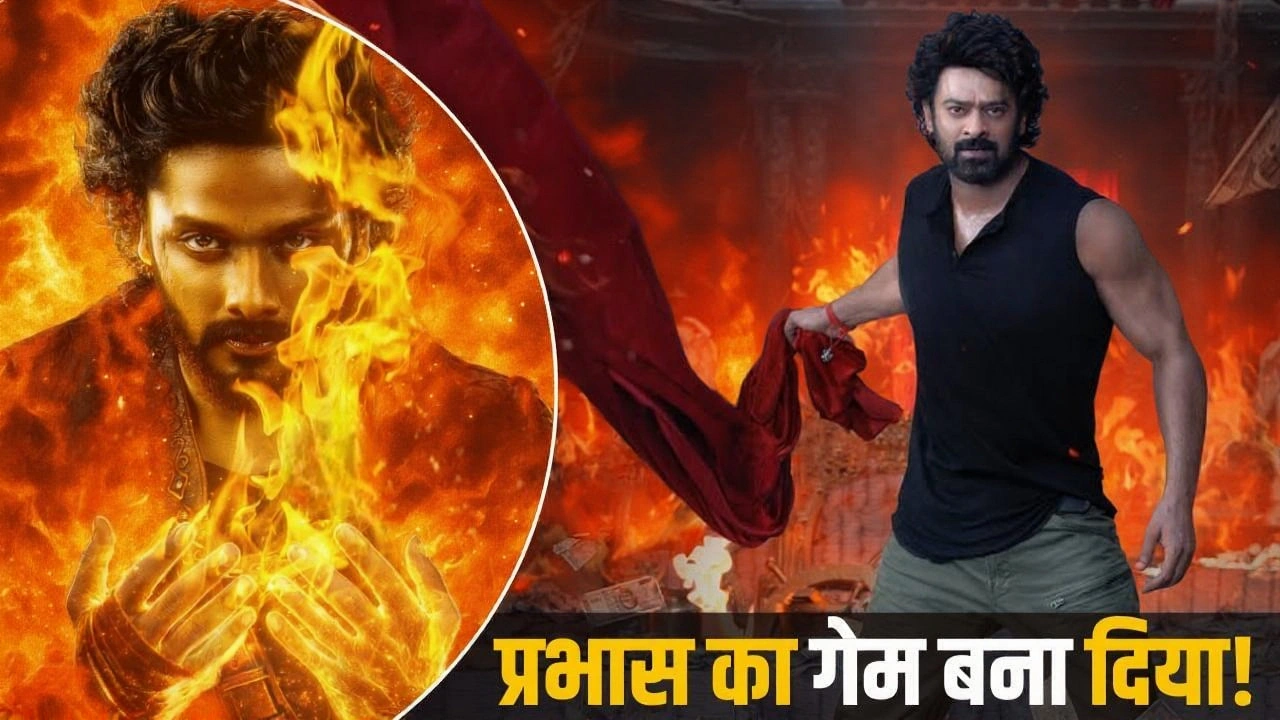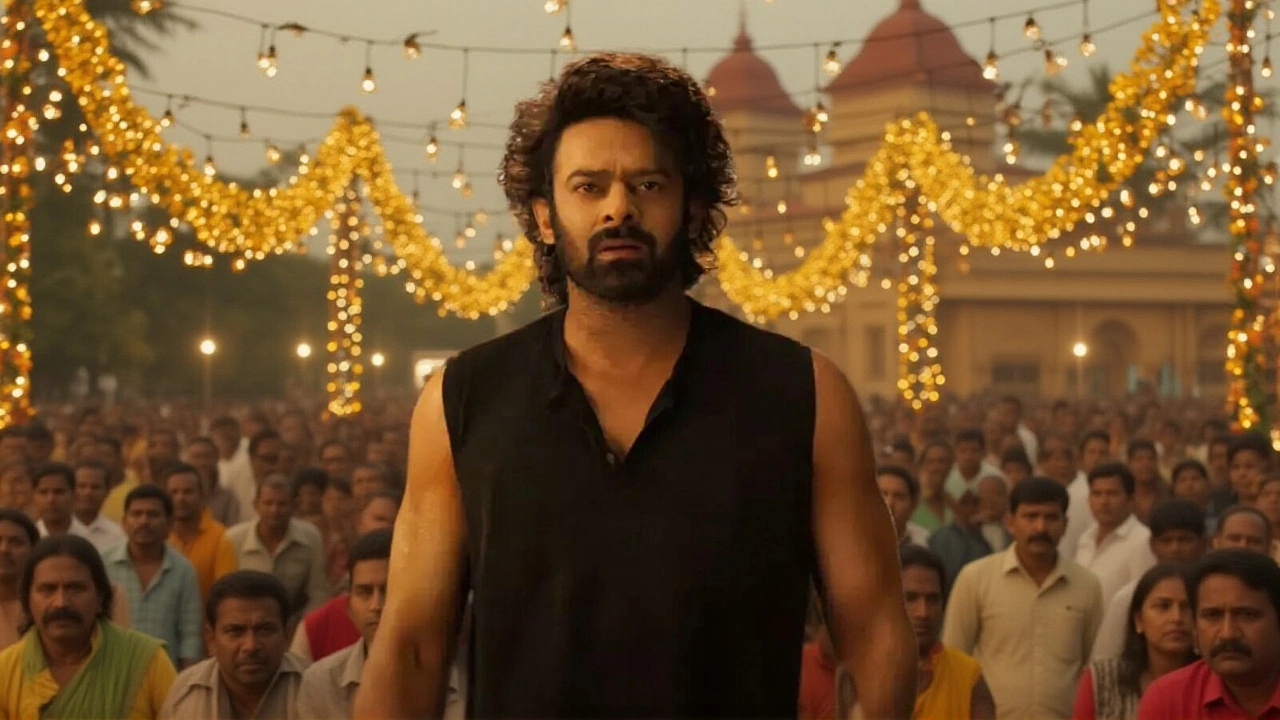When Prabhas, the actor who vaulted Telugu cinema onto the global stage, learned that his horror‑comedy The Raja Saab had been shifted to a January 9, 2026 release, fans across India and the diaspora collectively winced.
The announcement came straight from TG Vishwa Prasad, producer at People Media Factory, during a candid interview with Great Andhra. He cited lingering patchwork, unfinished songs and a mountain of visual‑effects work as the core reasons for postponing the film past its original December 5, 2025 slot.
Background and Earlier Delays
The project was first slated for an April 2025 debut, a timeline that already felt aggressive given the film’s ambitious blend of horror, comedy and period aesthetics. By mid‑2024, post‑production bottlenecks forced the first push to December, a decision that surprised distributors who had already locked in hefty Hindi rights for roughly Rs 75 crore.
Even before the holiday‑season shuffle, the crew wrestled with a workers’ union strike that halted principal photography for a week in September. Sources close to the set confirmed that the strike, sparked by pay‑dispute concerns, was resolved after negotiations, allowing filming to resume in early October.
Production Hiccups: Strikes and Post‑Production
According to a confidant cited by India Today, "Filming was briefly halted due to the union strike, but with the situation now under control, production has resumed. Only a few key scenes remain, along with three songs, all of which the team aims to complete in the next two months." The same source added that the schedule is "one of the tightest Prabhas has worked on in recent times," with daily call sheets meticulously planned to avoid any further slip‑ups.
The VFX pipeline, overseen by a consortium of houses in Hyderabad and Mumbai, still has around 450 shots pending. "We’re pushing parallel VFX work while finishing the remaining principal photography," explained Maruthi, the director known for his rapid‑shoot schedules. He noted that the film’s final look hinges on a blend of practical set pieces and CGI‑enhanced horror sequences, a combination that historically eats into timelines.
Financial Stakes and Distribution Plans
- Hindi theatrical rights: Rs 75 crore (secured)
- Domestic OTT rights: over Rs 100 crore
- North American distribution target: USD 10 million breakeven
- Pan‑India release in five languages (Telugu, Hindi, Tamil, Kannada, Malayalam)
These figures underline the massive commercial confidence that backers have in The Raja Saab, despite the setbacks. The January slot aligns with the Sankranti festival, a period that traditionally delivers a 30‑40% bump in box‑office receipts for Telugu blockbusters.
Cast, Crew, and Creative Shift
Beyond Prabhas’s dual‑role challenge, the film marks the Telugu debut of Malavika Mohanan, who brings a fresh glamour factor. She joins an ensemble that includes Nidhhi Agerwal, Ridhi Kumar and veteran Bollywood star Sanjay Dutt.
The project is a deliberate pivot from Prabhas’s recent high‑octane ventures such as Kalki 2898 AD, Saaho and Salaar: Part 1‑Ceasefire. He’s returning to a “vintage” tone that fans have clamored for since the Baahubali era, blending tongue‑in‑cheek humor with atmospheric scares.
Release Timing and Box‑Office Forecast
Choosing Sankranti’s January 9 release puts the film head‑to‑head with Tamil superstar Thalapathy Vijay’s Jana Nayagan and several other regional releases. Industry analyst Rashmi Joshi of BoxOfficeIndia predicts a “tight but doable” opening, noting that Prabhas’s draw in North America may offset competition domestically.
Moreover, the decision to shift from the originally demanded December 5 date appeases the production house’s logistical constraints while still capitalising on the festive spend‑up surge. The delay also grants extra breathing room for the VFX teams to polish the horror‑comedy set‑pieces that critics have already praised in early teasers.
Future Outlook and Franchise Plans
In the same interview, TG Vishwa Prasad hinted at a sequel, signalling long‑term franchise ambitions. "If audiences love the world we’ve built, we’ll be ready to expand it," he said, suggesting that the sequel could explore a different “Raja” from another kingdom, preserving the horror‑comedy DNA.
The postponement, while inconvenient for eager fans, may ultimately benefit the film’s longevity. By ensuring that VFX, music and post‑production are polished, the makers aim to deliver a product that can withstand the intense competition of the Sankranti window and lay a sturdy foundation for future installments.

Frequently Asked Questions
Why was the December 2025 release date scrapped?
Producer TG Vishwa Prasad said the film still needed crucial VFX work, unfinished songs and a few key scenes. The union strike earlier this year also ate into the schedule, making the December deadline unrealistic.
How does the January 2026 Sankranti slot affect the film's earnings?
Sankranti is traditionally a high‑spending period for Telugu cinema, often delivering a 30‑40% box‑office uplift. Though the film will clash with Jana Nayagan, Prabhas’s pan‑India appeal and strong overseas draw, especially in North America, could help it capture a sizable share of the festive audience.
What are the financial stakes behind The Raja Saab?
Hindi theatrical rights have fetched roughly Rs 75 crore, while domestic OTT packages exceed Rs 100 crore. Internationally, the North American distributor aims for a breakeven of USD 10 million, underscoring the film’s high commercial expectations despite the setbacks.
Will the delays impact the planned sequel?
According to TG Vishwa Prasad, the sequel is still on the table. The team wants the first film to land cleanly, so they’re taking the extra time now to avoid compromising the franchise’s future.
How significant is the VFX workload for this horror‑comedy?
Around 450 visual‑effects shots remain, ranging from spectral apparitions to large‑scale set extensions. Director Maruthi has emphasized that the VFX are integral to the film’s mood, meaning they can’t be rushed without risking visual quality.
